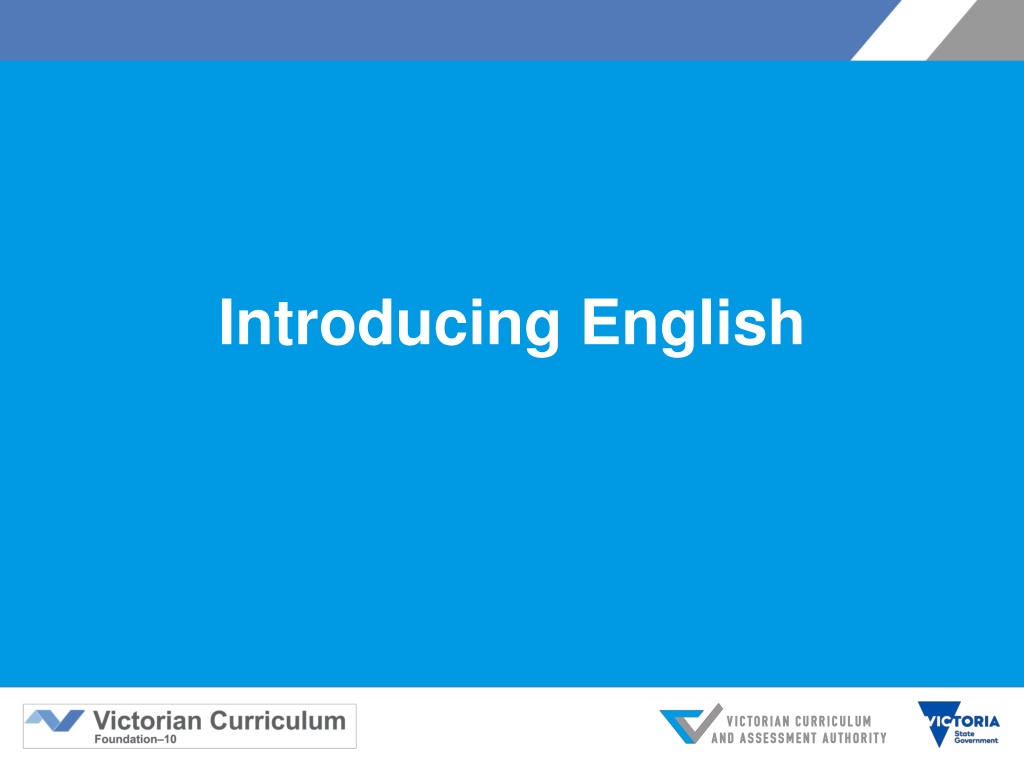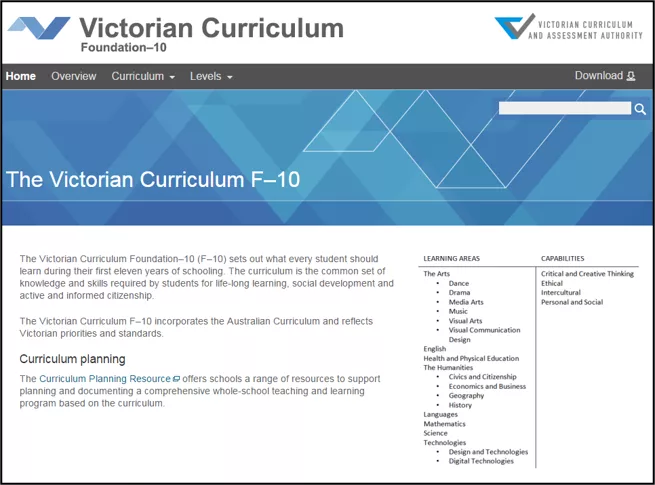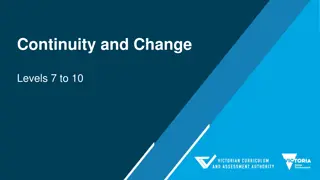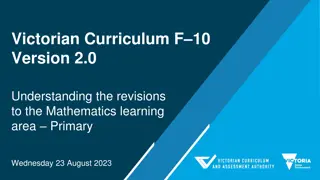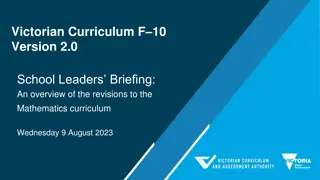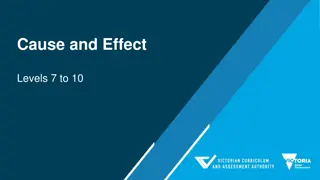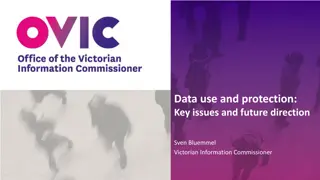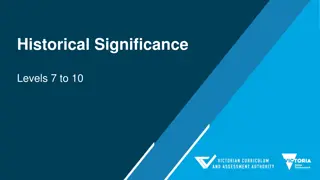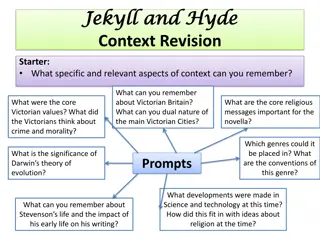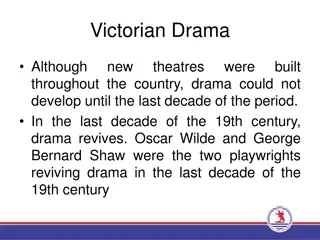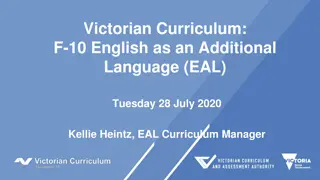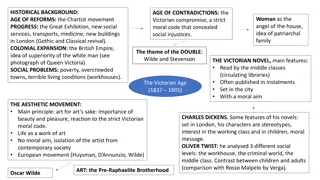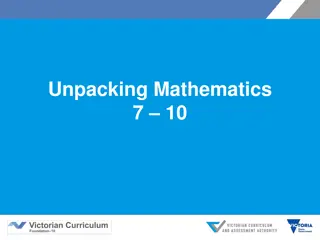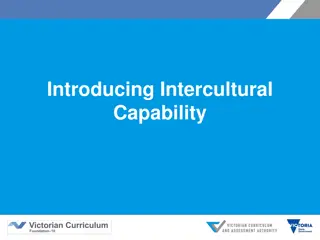Overview of Victorian English Curriculum
The Victorian Curriculum F-10, released in September 2015, serves as a foundational component of the Education State, aligning with the Australian Curriculum while reflecting Victorian priorities and standards. The English curriculum prioritizes language skills development through listening, reading, speaking, and writing across various contexts. It aims to cultivate an appreciation for the English language, understand linguistic forms, explore literary aspects, and promote inquiry skills. The curriculum is structured by language modes, strands, and achievement standards, offering inclusive learning opportunities for students with disabilities.
Download Presentation

Please find below an Image/Link to download the presentation.
The content on the website is provided AS IS for your information and personal use only. It may not be sold, licensed, or shared on other websites without obtaining consent from the author.If you encounter any issues during the download, it is possible that the publisher has removed the file from their server.
You are allowed to download the files provided on this website for personal or commercial use, subject to the condition that they are used lawfully. All files are the property of their respective owners.
The content on the website is provided AS IS for your information and personal use only. It may not be sold, licensed, or shared on other websites without obtaining consent from the author.
E N D
Presentation Transcript
Victorian Curriculum F10 Released in September 2015 as a central component of the Education State Provides a stable foundation for the development and implementation of whole-school teaching and learning programs The Victorian Curriculum F 10 incorporates the Australian Curriculum and reflects Victorian priorities and standards http://victoriancurriculum.vcaa.vic.edu.au/
Aims The English curriculum aims to ensure that students: learn to listen to, read, view, speak, write, create and reflect on increasingly complex and sophisticated spoken, written and multimodal texts across a growing range of contexts with accuracy, fluency and purpose appreciate, enjoy and use the English language in all its variations and develop a sense of its richness and power to evoke feelings, convey information, form ideas, facilitate interaction with others, entertain, persuade and argue understand how Standard Australian English works in its spoken and written forms and in combination with non-linguistic forms of communication to create meaning develop interest and skills in inquiring into the aesthetic aspects of texts, and develop an informed appreciation of literature.
Structure The English curriculum is organised by three language modes and then strands Language mode Reading and Viewing Writing Speaking and Listening Achievement standards The achievement standards are structured by language mode. The first achievement standard at Foundation and then at Levels 1, 2, 3, 4, 5, 6, 7, 8, 9 and 10 A curriculum for students with disabilities is provided in this learning area
Structure Within each language mode, the content descriptions are grouped into strands and sub-strands Strand Sub-strands Strand Sub-strands Strand Sub-strands Language Language variation and change Language for interaction Text structure and organisation Expressing and developing ideas Phonics and word knowledge Literature Literature and context Responding to literature Examining literature Creating literature Literacy Texts in context Interacting with others Interpreting, analysing, evaluating Creating texts
Focus areas Focus area information is not included on the digital version of the curriculum. This information is located on the Scope and Sequence charts. http://victoriancurriculum.vcaa.vic.edu.au/english/introduction/scope-and-sequence
Key messages English in the Victorian Curriculum is substantially similar to AusVELS English, with the majority of the curriculum unchanged. However, there have been some changes to strengthen particular areas and clarify others: Phonics and word knowledge strengthened Handwriting revised to make connection between phonics and handwriting more explicit Content descriptions added to improve developmental continuum Removal of duplicate content Consolidation of similar content Reporting progress in English These changes do not cause a break in reporting data and student progress can be shown from AusVELS English to the Victorian Curriculum F 10 English
Key messages EAL Update Work is being undertaken to update the EAL Companion to the Victorian Curriculum F-10 Schools should continue to use the current version during 2016
Key messages - Literacy across the curriculum Literacy is foundational to all learning areas and capabilities in the Victorian Curriculum. It is not one of the four capabilities which have separately articulated content descriptions and achievement standards. Students develop knowledge and skills across the Language and Literacy strands of the English curriculum. Much of the explicit teaching of literacy occurs in the English learning area, however, it is strengthened, made specific and extended in other learning areas as students engage in a range of learning and assessment with significant literacy demands. Resources will be prepared to support teachers to understand the language demands of different learning areas, and demonstrate how English content descriptions apply to particular texts.
